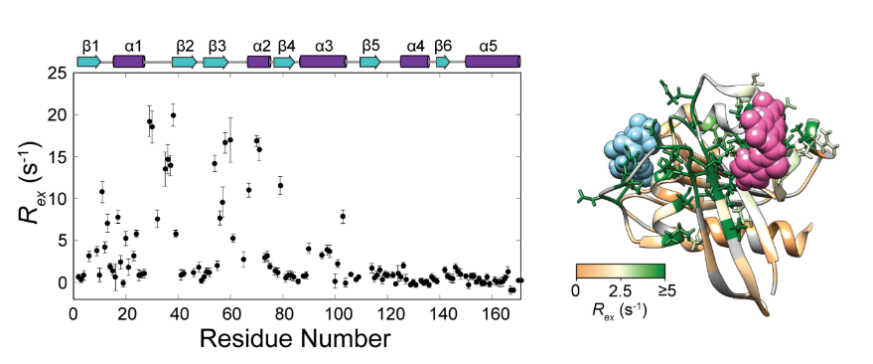NMRS Make It More Clearer to See the Crucial Cancer Target Ras
The research group led by Prof. LONG Dong from USTC find way to 'see' more clearer on allosteric dynamics of the cancer gene dominated protein called Ras by applying the Nuclear Magnetic Resonance spectroscopy(NMRS). The results were presented on Angewandte Chemie International Edition with the name Extending the Lifetime of Native GTP-Bound Ras for Site-Resolved NMR Measurements: Quantifying the Allosteric Dynamics.
Being the crucial signal transduction molecule in cells, the Ras protein has the potential to reflect troubles happened in the human body. Its activity changes are closely related to the appearance of malignant tumor of humankind, thus the Ras protein becomes an important target in the development of anticarcinogen. Characterization of native GTP‐bound Ras is important for an appreciation of its cellular signaling and for the design of inhibitors, which however has been depressed by its intrinsic instability. Herein, an effective approach for extending the lifetime of Ras⋅GTP samples by exploiting the active role of Son of Sevenless (Sos) is demonstrated. This approach sustains the activated state of Ras and makes the NMRS observation towards the activated state of Ras possible. This approach, combined with a postprocessing method that suppresses residual Ras⋅GDP signals, is applied to the site‐resolved NMR measurement of the allosteric dynamics of Ras⋅GTP. And they observed the main chain signals of almost all of the sites (97%) of the residual Ras-GTP compounds. The observed network of concerted motions well covered the recently identified allosteric inhibitor‐binding pockets, and advocated the use of native GTP for development of allosteric inhibitors.
The group led by Prof.LONG Dong had devoted to the dynamic research of the molecular structure of Ras for a long period. In their previous work, they had captured a regional structural motion of non-activated Ras which lasted for 34 microseconds by combining different kinds of NMRS technologies and confirmed it is closely related to the formation of covalent and non-covalent inhibitor-binding pockets. And in this research, they explained the dynamic quality of residual activated Ras further and deeper, laying the foundation for fully understanding and controlling the signal transduction activity of Ras.
Postgraduate student CHEN Xiaomin, YAO Haijie and WANG Hui are the first authors of the essay. This work got financial support from the technology department, the fund committee and received operation expenses for universities’ basic scientific research of central authorities.

Experimental demonstration of the concerted slow dynamics inRas·GTP.
Back
